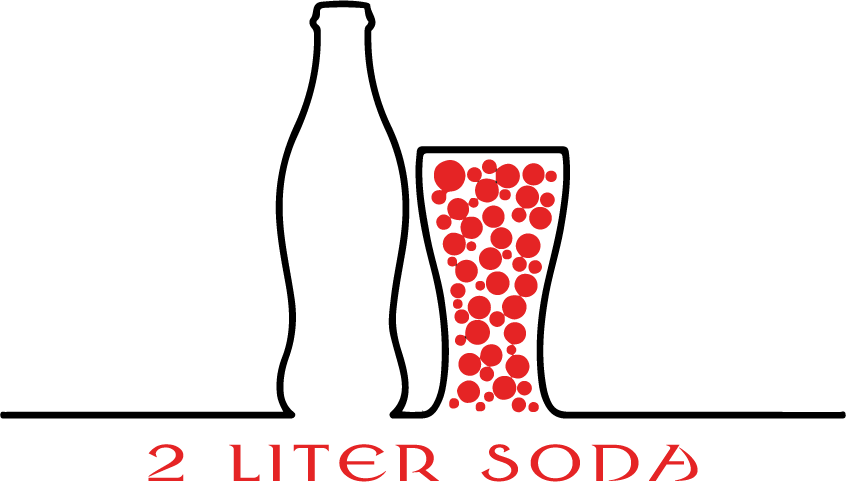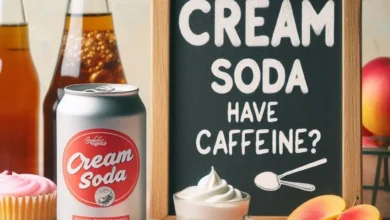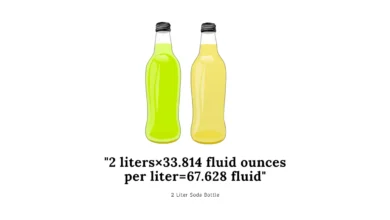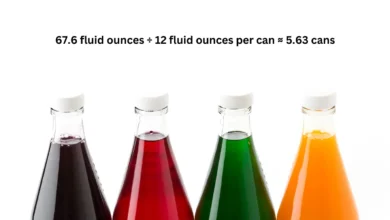How Much Does a 2 Liter of Soda Cost?
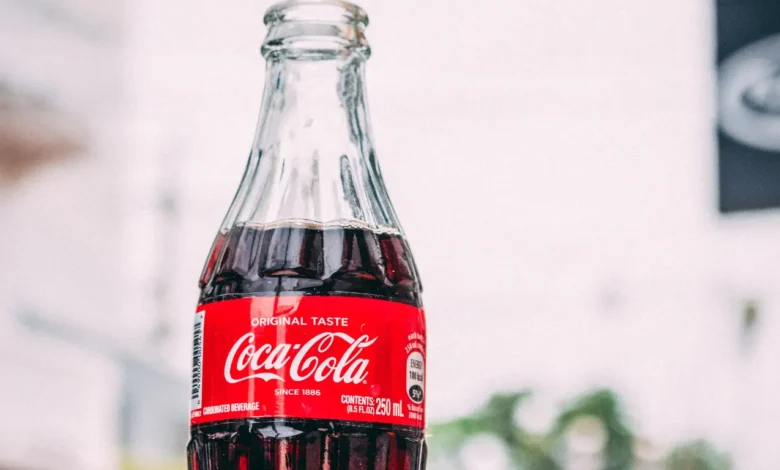
How Much Does a 2 Liter of Soda Cost? The cost of a 2-litre soda may seem simple, but it’s shaped by various factors, from brand choices to economic conditions. Whether you’re shopping in-store or online, buying a famous brand or a generic one, or even factoring in the local economy, many variables contribute to the final price of your soda.
This article explores these influences to help you understand why prices fluctuate and what you can expect to pay for a 2-litre soda in different circumstances.
Average Price Range for a 2-Liter Soda
On average, a 2-liter soda costs $1 to $2.50 in the United States, depending on the brand and location. Major retailers like Walmart and Target often offer popular brands like Coca-Cola and Pepsi within this price range.
The cost of generic or store brands tends to be on the lower end, often falling under $1.50. Prices can be higher in certain areas due to local taxes, higher living costs, or store markups. Smaller convenience stores often charge a premium, sometimes exceeding $3.
Store Variations in Soda Pricing
Soda prices can vary significantly depending on the type of store you visit. Large grocery store chains typically offer competitive prices, with frequent discounts or loyalty program deals.
Retail giants like Walmart, Costco, and Kroger can lower prices due to their bulk purchasing power. On the other hand, convenience stores such as 7-Eleven or gas station shops often charge higher prices due to convenience and location, usually between $2.50 and $3.50 for a 2-litre bottle.
Discount stores, like Dollar General or Family Dollar, usually have prices closer to grocery chains, though they might carry a more limited selection. Their store brands are generally cheaper but still comparable in quality to well-known soda brands.
Brand vs. Generic Soda Prices
Another factor to consider is the price difference between branded and generic soda. Brands like Coca-Cola, Pepsi, and Dr Pepper are more expensive because of their marketing, brand loyalty, and perceived quality. A 2-litre bottle of one of these brands can often range from $1.50 to $2.50.
In contrast, stores such as Great Value (Walmart’s brand) or Kirkland Signature (Costco’s brand) tend to be significantly cheaper, often ranging from $0.80 to $1.50. While the taste of these sodas might not be identical to the well-known brands, they offer considerable savings for budget-conscious shoppers.
Consumers choosing between name brands and generics often weigh taste preferences, familiarity, and price.
Seasonal and Promotional Pricing for Soda
Soda prices fluctuate with the seasons, particularly around major holidays. During the Fourth of July, Thanksgiving, and Christmas, soda is frequently part of holiday meals and gatherings, leading to more aggressive pricing and promotions. It is expected to find 2-litre bottles priced as low as $0.99 during these periods as retailers aim to boost sales volume.
Promotions like buy-one-get-one (BOGO) offer loyalty program deals, or discounts tied to larger purchases often coincide with these holiday periods. Retailers also use these strategies to clear out older inventory or drive higher foot traffic. Planning your soda purchases around these promotional periods can result in significant savings.
Online vs. In-Store Soda Prices
The rise of online shopping has also influenced soda prices. Online retailers such as Amazon, Walmart, and Instacart offer convenience but often at a slight premium compared to in-store prices. While it’s possible to find soda at competitive prices online, the shipping cost and the smaller discounts available mean that purchasing soda in-store is usually cheaper, particularly if you’re buying in small quantities.
However, online deals do exist, especially when buying in bulk. Subscription services or larger packages often lead to lower prices per litre. For example, buying a pack of 6 or 12 bottles online might increase the price per bottle to match or even beat in-store prices. However, for single or low-volume purchases, the convenience of online shopping often comes with a slightly higher price tag.
Soda Prices by Region and Local Economy
Where you live can significantly affect your price for a 2-litre soda. In urban areas with a higher cost of living, such as New York City or San Francisco, prices can be up to 20-30% higher than in rural areas or smaller cities. Regional taxes, local demand, and the economic environment affect these prices. For instance, states with higher wages or higher demand for premium goods often see higher soda prices.
In contrast, rural areas or regions with a lower cost of living tend to have lower prices, sometimes by as much as $0.50 to $1. This discrepancy is due to a combination of factors, including lower store operating costs and less aggressive competition among retailers.
Economic Influences on Soda Prices
The broader economy also impacts soda prices. Inflation, for example, leads to higher costs across all consumer goods, including soda. When the cost of producing soda rises—due to higher prices for sugar, packaging, or transportation—these increases are typically passed on to consumers. During economic uncertainty or recession periods, soda prices may rise more slowly as retailers are cautious about losing customers.
Global supply chain disruptions, such as those caused by the COVID-19 pandemic, can also affect prices. When supply chains are strained, the cost of ingredients and packaging materials often increases, leading to higher retail prices for consumers.
The Role of Sugar Taxes on Soda Pricing
An increasingly common factor in soda pricing is the implementation of sugar taxes. Several states and cities in the U.S. and other countries worldwide have introduced taxes on sugary beverages to combat obesity and other health issues. These taxes often result in higher prices for consumers.
- Uncategorized6 products
- Baking Soda5 products
- Can13 products
- Coca-Cola11 products
- Energy Drink17 products
- Fanta8 products
- Italy Soda1 product
- Pepsi9 products
- Soda Pack7 products
- Soda Parts3 products
- Sprite12 products
For instance, in cities like Philadelphia and San Francisco, sugar taxes have added anywhere from $0.50 to $1.50 to the price of a 2-liter soda. While these taxes are intended to reduce soda consumption and promote healthier choices, they can significantly increase the cost of a bottle of soda, particularly in regions where these taxes are substantial.
Bulk Buying and Discounts on Soda
Bulk purchasing is one of the easiest ways to save money on soda. Wholesale retailers like Costco, Sam’s Club, or BJ’s often offer cases of soda that significantly reduce the price per litre. These retailers cater to customers willing to buy in larger quantities, which results in lower prices per unit.
Bulk buying is especially effective during promotional periods, where customers can take advantage of additional discounts. Even if a single 2-litre bottle costs $1.50, buying a 12-pack or more could lower the per-bottle cost to under $1. This makes bulk buying appealing for families or gatherings where soda is consumed regularly.
Consumer Demand and Its Influence on Soda Prices
Consumer demand for soda can also drive prices. When demand is high, prices tend to follow, especially during warm weather or holidays when soda consumption increases. Conversely, soda demand typically decreases during colder months, and prices may drop.
Retailers and manufacturers respond to these shifts in demand by adjusting prices accordingly. In times of high demand, it’s common to see fewer discounts or promotional offers. Retailers may introduce more aggressive pricing during slower sales periods to move their inventory.
Impact of Ingredient Costs on Soda Pricing
The ingredients used in soda play a significant role in its cost. The price of critical components like sugar, corn syrup, and artificial sweeteners can fluctuate based on global commodity markets. When the cost of these ingredients rises, soda manufacturers may pass these increases on to the consumer.
For instance, if sugar prices spike due to poor harvests or increased demand, soda prices will rise. Similarly, the cost of carbon dioxide, flavourings, and even caffeine can influence the price of a 2-litre soda. Keeping an eye on ingredient markets can predict when soda prices might increase.
Environmental and Sustainability Costs
Sustainability efforts and environmental regulations are beginning to affect soda pricing as well. Many consumers are pushing for more environmentally friendly packaging, such as recyclable materials or reducing plastic waste. These changes come at a cost to manufacturers, who may raise prices to cover the expense of more sustainable practices.
Moreover, the environmental impact of production, transportation, and disposal is also a factor in pricing. Soda companies are now investing in more energy-efficient production methods and sustainable sourcing for their ingredients, which can lead to higher costs that are eventually passed on to consumers.
Marketing and Brand Premiums
One reason big-name brands like Coca-Cola and Pepsi tend to be more expensive than generic brands is marketing and brand loyalty. These companies invest heavily in advertising, sponsorships, and promotions to maintain their status as household names, and this added cost is built into the price of their products.
/prod
Consumers often pay more for these brands due to familiarity, perceived quality, or personal preference. The premium pricing with well-known brands reflects the product and the investment in keeping those brands top-of-mind with consumers.
Future Trends in Soda Pricing
Several trends could influence soda pricing in the coming years. The shift towards healthier lifestyles drives demand for low-sugar or sugar-free options, which may carry a premium due to the specialised ingredients used. Additionally, environmental regulations and sustainable practices may continue to drive up production costs, leading to higher retail prices.
Economic factors like inflation and supply chain disruptions are also likely to influence future pricing trends. Consumers should expect to see price fluctuations in their favourite sodas as the world recovers from global disruptions like the COVID-19 pandemic. Staying informed about these trends will help consumers make smarter purchasing decisions.
Soda Pricing for Specialty and Organic Brands
Speciality and organic sodas are becoming more popular as consumers seek healthier alternatives. These products often use natural ingredients, avoid artificial sweeteners, and emphasise sustainable production. As a result, the cost of these sodas is usually higher than conventional sodas.
